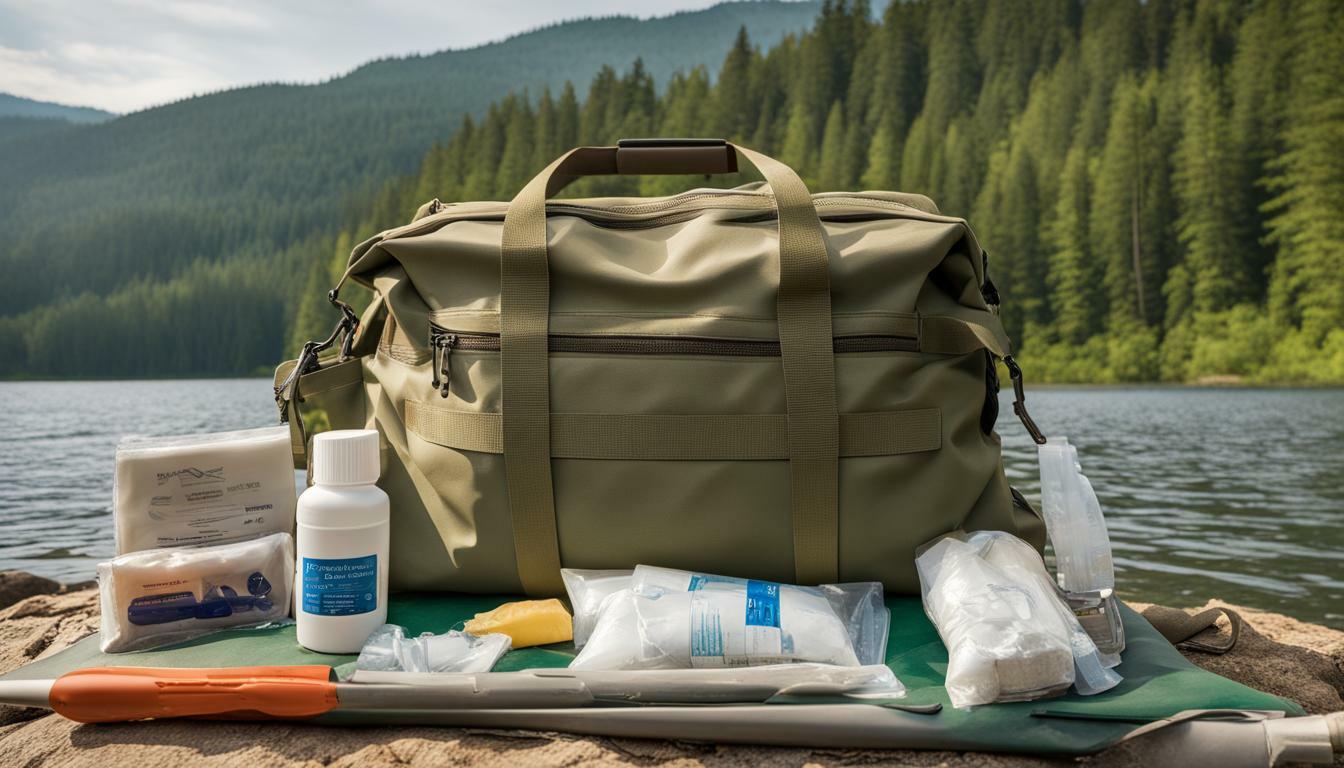The Importance of a Well-Stocked First Aid Kit
When embarking on a long-distance canoe trip, it is vital to understand the importance of a well-stocked first aid kit. Accidents and emergencies can happen at any time while out on the water, and having the necessary supplies on hand could mean the difference between a minor mishap and a serious incident. Therefore, it is crucial to pack a comprehensive first aid kit that includes the necessary emergency supplies for canoe trips.
While it is impossible to predict every emergency, canoeists should prepare for the most common injuries and illnesses that may occur during long-distance expeditions. Bumps, bruises, cuts, sunburn, and insect bites are just a few of the potential hazards that canoeists may encounter. Additionally, injuries from falls, collisions, or capsizes could happen, making it essential to have a first aid kit that can handle these types of emergencies.
When it comes to selecting a first aid kit for canoe trips, there are many factors to consider. The kit should be portable, waterproof, and durable enough to withstand the rigors of outdoor adventures. It should also be fully stocked with all the necessary supplies and equipment to manage injuries and illnesses until professional help arrives.
To ensure canoeist safety in the wilderness, it is essential to pack a first aid kit that is well-suited to the demands of long-distance canoe trips. By taking the time to pack a well-stocked first aid kit, canoeists can rest assured knowing that they are well-prepared for any potential emergencies or injuries that may happen while on the water.
Understanding Wilderness First Aid
When embarking on a canoeing expedition, being prepared for any unexpected event is crucial for your safety. One way to ensure preparedness is by having knowledge of wilderness first aid. This specific type of first aid focuses on handling injuries or emergencies that occur in remote areas where medical help may be difficult to access.
Wilderness first aid for canoeing expeditions involves basic knowledge and skills that every canoeist should possess. It includes assessing injuries, managing fractures and dislocations, treating wounds and burns, and dealing with hypothermia and dehydration. Knowing these skills will enable you to respond appropriately in case of an emergency and, in some cases, prevent further harm.
Preparedness for Canoeing Expeditions
Being prepared before embarking on a canoeing expedition can make a difference in handling injuries and emergencies later on. Besides having a well-stocked first aid kit, bringing proper safety equipment, such as personal flotation devices (PFDs), flashlights, and signaling devices, is crucial to ensure your safety on the water.
Familiarizing yourself with the weather forecast, water conditions, and the route you plan to take beforehand can also prevent accidents and emergencies. Knowing where the nearest medical facilities are and having a communication plan in place with friends and family can also aid in case of an emergency.
Overall, understanding wilderness first aid and being prepared before embarking on a canoeing expedition can help prevent injuries and ensure your safety in case of an emergency.
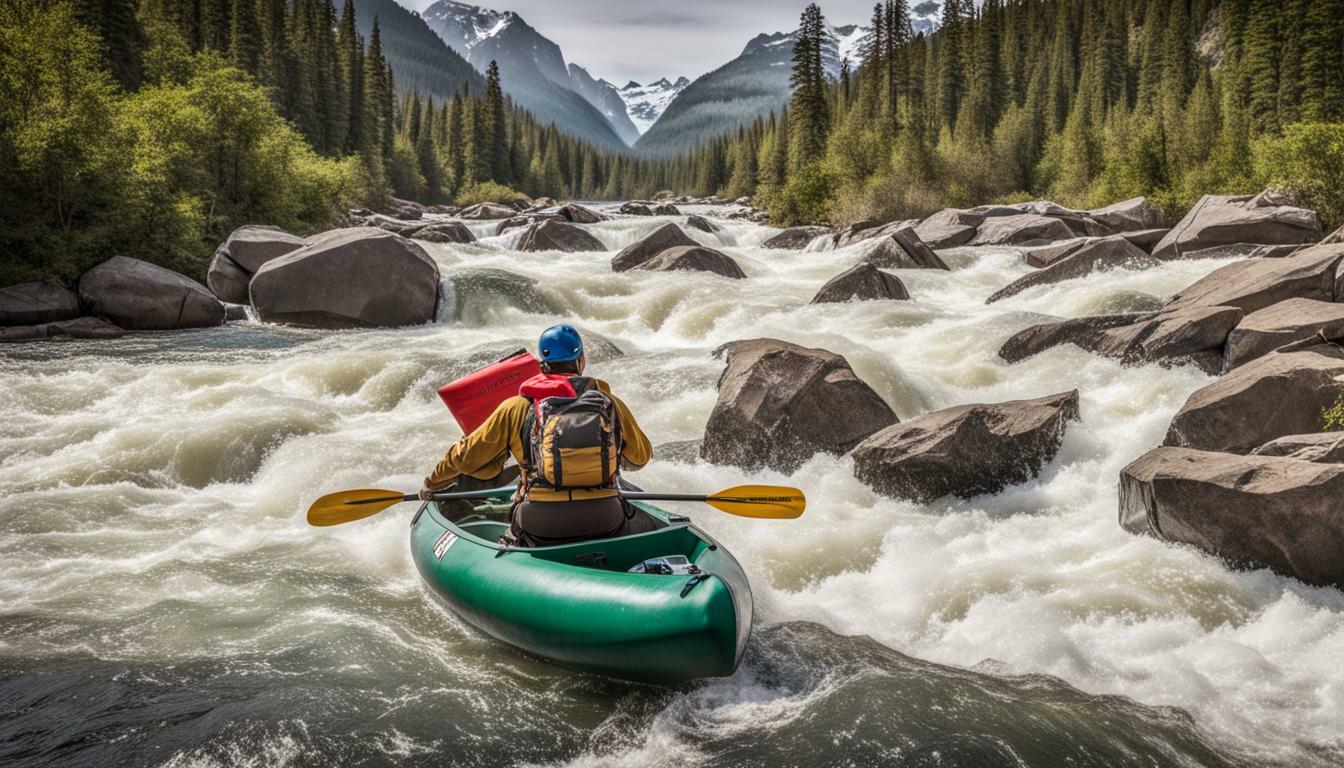
Factors to Consider When Selecting a First Aid Kit
When planning a long-distance canoe trip, it is important to have the appropriate first aid gear. A well-stocked first aid kit can help you to manage injuries and emergencies during your journey. Here are some factors to consider when selecting a first aid kit for long canoe trips.
Size and Weight
One of the primary considerations when selecting a first aid kit for long-distance canoe trips is the size and weight of the kit. A compact yet comprehensive kit is ideal for canoe trips as it should not add significant weight to your luggage. Additionally, the kit should be small enough to fit in your canoe without taking up too much space.
Specific Requirements
The specific requirements of your canoe trip can also affect the type of first aid kit you will need. For example, if you are planning a trip that involves waterfalls or rapids, it may be necessary to include items for treating more severe injuries such as fractures or dislocations. Likewise, if you are traveling in a remote area with limited access to medical facilities, you may require a more extensive first aid kit.
Activity-Specific Gear
Another factor to consider when selecting a first aid kit for long-distance canoe trips is the type of gear that is specific to your activity. You will need gear that can be used effectively in a water-based environment. This may include supplies such as water-resistant adhesive bandages, disinfectant wipes, and waterproof medical tapes. Your first aid kit must be waterproof or should come with a waterproof bag to keep your supplies dry.
Your Experience and Skill Level
Your experience and skill level can also play a role in the type of first aid kit that you choose. If you are new to canoeing, you may want to consider a kit with basic supplies and comprehensive instructions. If you are experienced in canoeing and have wilderness first aid training, you may be able to manage more complex injuries and emergencies, and may require a kit with more specialist items.
By considering these factors when selecting a first aid kit, you can ensure that you have the appropriate gear to manage any emergencies during long-distance canoe trips.
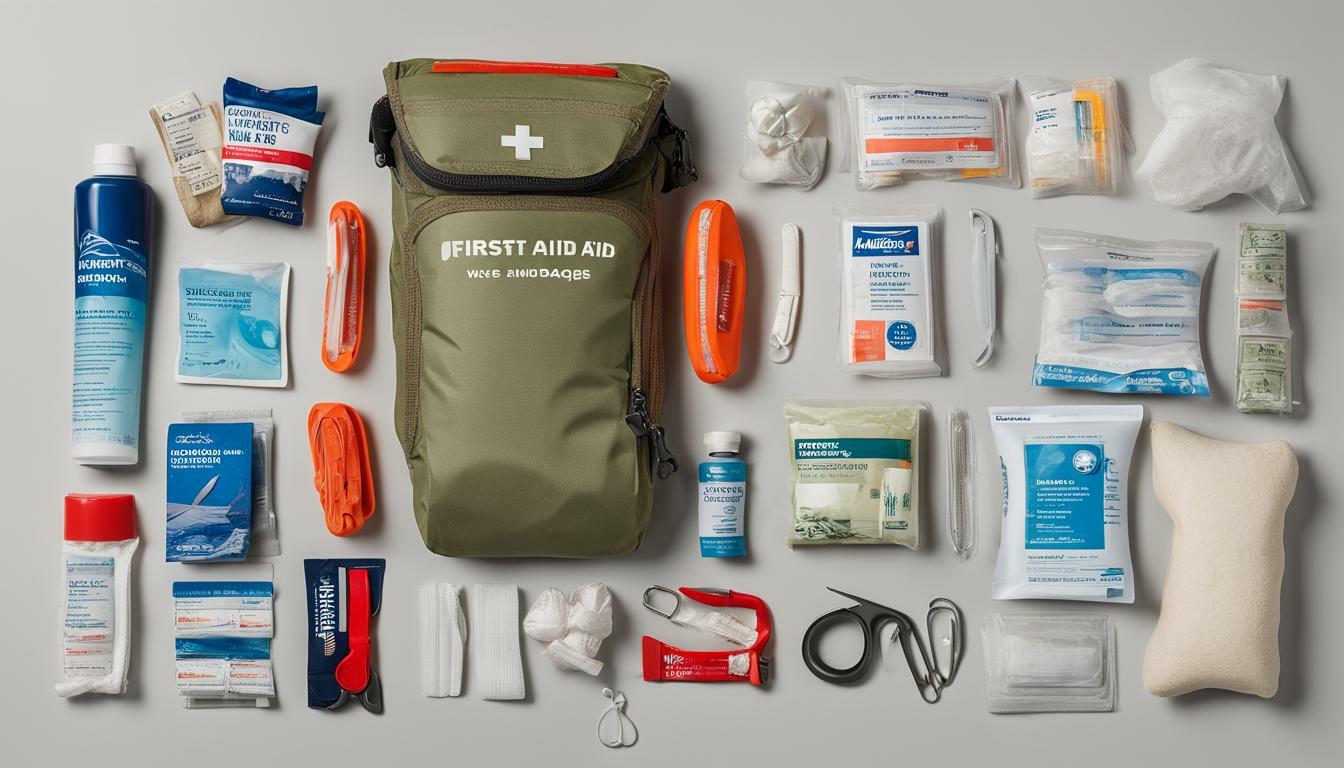
Must-Have First Aid Supplies for Canoeing
When it comes to long-distance canoe trips, having a well-stocked first aid kit is essential. The kit should include all the necessary gear needed to attend to minor injuries and handle emergencies that may arise during the trip. Here are some of the essential items to have in your first aid kit for long canoeing trips:
| Item | Purpose |
|---|---|
| Adhesive bandages (assorted sizes) | To cover small cuts, scrapes and blisters |
| Antibacterial ointment | To prevent infection of minor cuts and scrapes |
| Gauze pads (assorted sizes) | To clean and dress larger wounds |
| Rolled gauze | To wrap sprains and support injuries |
| Medical tape | To secure bandages and gauze |
| Tweezers | To remove splinters, thorns or other foreign objects |
| Scissors | To cut tape, gauze and clothing if needed |
| Antihistamines | To treat allergic reactions or bug bites |
| Aspirin or acetaminophen | To provide pain relief or fever reduction |
| Insect repellent | To avoid bug bites and stings |
| Sunscreen | To protect from sunburn and UV rays |
| Emergency blanket | To keep warm in case of hypothermia |
It’s important to keep in mind that the specific contents of your first aid kit may vary depending on the length and location of your canoe trip. However, having these essential items will give you a good foundation to work from.
Dealing with Injuries and Emergencies on a Canoe Trip
When embarking on a long-distance canoe trip, being prepared for potential injuries and emergencies is crucial. Having a well-stocked first aid kit is essential for providing immediate care in case of accidents. Additionally, carrying canoeing safety equipment complements basic first aid supplies to ensure the safety of every canoeist on the water.
Some common injuries and emergencies that may arise during a canoe trip include cuts, scrapes, fractures, hypothermia, and sunburn. It is important to have the necessary medical supplies on hand to address these issues. For instance, antiseptic wipes, gauze, and bandages are necessary for treating cuts and scrapes. On the other hand, a well-equipped first aid kit should include a splint, pain relievers, and other supplies necessary for treating fractures.
Aside from the basic first aid supplies, additional canoeing safety equipment, such as personal flotation devices (PFDs), helmets, and whistles, should be carried on every long-distance canoe trip. PFDs play an essential role in keeping canoeists safe on the water. In the event of an emergency, PFDs help to keep the person afloat and breathing by supporting their head out of the water. They are particularly important when canoeing in rough waters.
Moreover, helmets should be worn when canoeing in rapids or other unevenly flowing water bodies. They protect canoeists from head injuries in case of a capsize. Additionally, whistles are crucial for attracting attention and signaling distress when injured or encountering an emergency situation.
It is important to note that canoeing safety equipment should be regularly inspected and maintained to ensure they remain functional. Damaged PFDs or helmets should be replaced immediately to avoid compromising safety on the water.
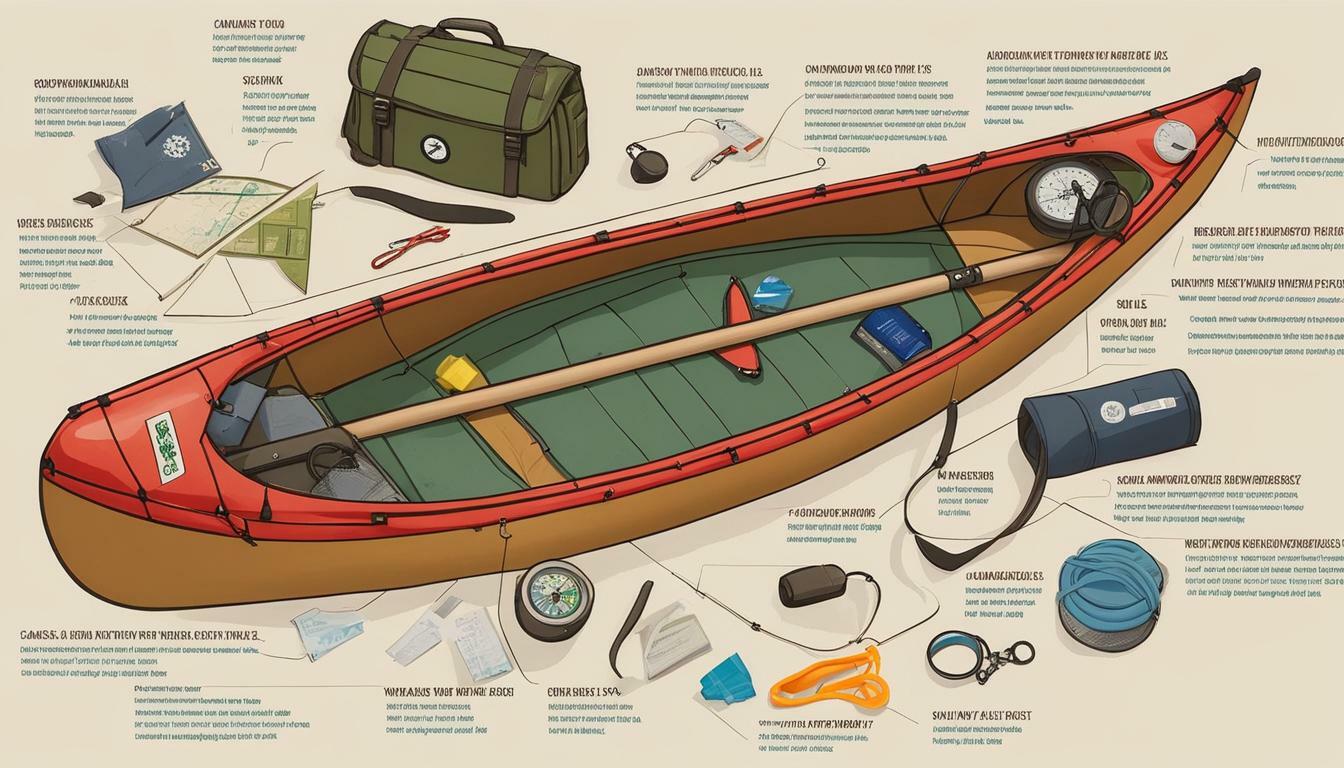
In conclusion, being prepared for injuries and emergencies is an important part of canoeing. A well-stocked first aid kit, complemented by canoeing safety equipment, should always be carried on long-distance canoe trips. Moreover, regular inspection and maintenance of safety equipment should be done to ensure they function properly and efficiently. By prioritizing safety and being prepared, every canoeing expedition can be enjoyable and safe.
Beyond First Aid: Additional Safety Measures
When it comes to canoeing safety, being prepared goes beyond having a well-stocked first aid kit. Before embarking on a long-distance canoe trip, there are several additional safety measures to consider to ensure a safe and enjoyable journey.
First and foremost, paddling preparedness is crucial. This means having the necessary skills and knowledge to navigate through different water conditions, including rough waters and adverse weather. It is important to have the right equipment, such as paddles, life jackets, and helmets, and to know how to use them properly.
Additionally, it is recommended to bring a GPS device or compass to avoid getting lost, as well as a whistle or flare to signal for help in emergency situations. Having a plan for communication, such as a satellite phone or radio, can also be helpful in remote areas where cell service may not be available.

It is also important to research the area you will be canoeing in beforehand to be aware of any potential hazards or wildlife that may pose a threat. This can help you prepare and pack accordingly, such as bringing bear spray or bug repellent if necessary.
Finally, make sure to inform others of your itinerary and expected return time, and have a plan in place for emergency situations. By taking these additional safety measures, you can enjoy your long-distance canoe trip with peace of mind and confidence in your preparedness.
Expert Advice for Canoeing Preparedness
Canoeing is an exhilarating activity that requires proper preparation to ensure your safety on the water. Before embarking on a long-distance canoe trip, it is essential to have a good understanding of the potential hazards and how to mitigate them. Here are some expert tips and advice on canoeing preparedness to keep you safe during your journey.
Invest in Quality Canoeing Safety Equipment
One of the first steps in canoeing preparedness is to invest in quality safety equipment. This includes personal flotation devices (PFDs), helmets, throw ropes, and flares. Make sure all equipment is properly fitted and in good working condition. It is also essential to know how to use these items effectively in an emergency situation.
Plan for Emergencies
When planning your canoe trip, it is crucial to prepare for emergencies. This means having a well-stocked first aid kit and knowing how to use it. You should also have a plan in place for communication and rescue in case of an emergency. Research the area you will be canoeing in and be aware of any potential hazards or dangerous wildlife.
Obtain Wilderness First Aid Training and Certification
Having proper training and certification in wilderness first aid is crucial for canoeing preparedness. This will equip you with the necessary knowledge and skills to handle injuries and emergencies in remote areas. Consider taking a comprehensive course that covers topics such as CPR, wound care, and hypothermia treatment.
Stay Aware of Your Surroundings
During your canoe trip, it is important to stay aware of your surroundings at all times. Always keep a close eye on the weather conditions and be prepared for sudden changes. Know how to read the water and identify potential hazards such as rocks or rapids. It is also important to stay hydrated and nourished throughout your journey.
Canoeing can be a thrilling experience, but it is important to prioritize safety and preparedness. By investing in quality safety equipment, planning for emergencies, obtaining proper training, and staying aware of your surroundings, you can have a safe and enjoyable journey on the water.

Navigating Challenging Conditions: Safety Tips
Canoeing is an exhilarating outdoor activity, but it is not without its risks, especially when facing challenging conditions such as strong winds and rough waters. Here are some safety tips to help you navigate these conditions and ensure a safe and enjoyable canoe trip:
1. Check the Weather Forecast
Before embarking on a canoe trip, make sure to check the weather forecast thoroughly. High winds, heavy rain, and thunderstorms can make paddling dangerous, so it’s essential to stay up-to-date with weather conditions and adjust plans accordingly. If there’s a storm forecasted, consider postponing your trip altogether.
2. Wear Proper Gear
Wearing the right gear is crucial to stay safe on the water. Ensure that you have appropriate clothing, including a life jacket, waterproof jacket, and pants. It’s also essential to wear appropriate footwear, such as water shoes, to prevent slips and falls.
3. Properly Load Your Canoe
Improper loading of your canoe can cause it to capsize and put you and your fellow paddlers at risk. Ensure that the weight in the canoe is evenly distributed, and the heavier items are stored at the bottom to prevent the canoe from tipping over in rough waters.
4. Know Your Limits
It’s essential to know your limits and only take on challenges that you’re capable of handling. If you’re not experienced in paddling in challenging conditions, it’s best to avoid it altogether. If you do find yourself in a situation beyond your capabilities, try to remain calm and signal for help if needed.
5. Stay Alert
Always stay alert when paddling in challenging conditions. Keep an eye out for hazards in the water, such as rocks and debris, and avoid them where possible. Stay focused on maintaining proper technique, and regularly check in with your fellow paddlers to ensure they are okay.
To sum up, navigating challenging conditions during a canoe trip requires proper preparation, the right gear, and knowledge of your capabilities. By following these safety tips, you can ensure a safe and enjoyable journey on the water.

Keeping Your First Aid Kit in Top Condition
A well-stocked first aid kit is an essential item for any long-distance canoe trip, providing peace of mind and ensuring the safety of everyone on board. However, it’s imperative to keep your first aid kit in optimal condition, ready to use should the need arise. Here are some essential tips for maintaining your first aid kit:
Proper Storage
First and foremost, it’s essential to store your first aid kit in a cool, dry place. Exposure to heat and moisture can cause items to deteriorate and reduce their effectiveness, so consider a waterproof container to protect it from the elements. Ensure that the contents are easily accessible and within reach in case of an emergency.
Regular Inspections
Performing regular inspections is critical to maintaining your first aid kit’s effectiveness. Check the contents regularly to ensure that nothing has expired, and replace any used or damaged items immediately. It’s also a good idea to perform a full inventory check before embarking on a canoeing trip to make sure that everything you need is present.
Necessary Replacements
As you use items from your first aid kit, be sure to replace them right away. It’s much easier to repack an unused kit than to piece together a new one when you’re in the middle of an emergency. Check expiration dates on medication, sunscreen, and insect repellent and replace them accordingly. It’s better to have new and reliable supplies rather than expired or outdated ones that may not work when you need them most.
By following these simple tips, you can keep your first aid kit in top condition, ready to provide essential aid should an emergency arise during your long-distance canoe trip. Remember, the safety of everyone on board is of utmost importance, so take the time to keep your kit in good shape.
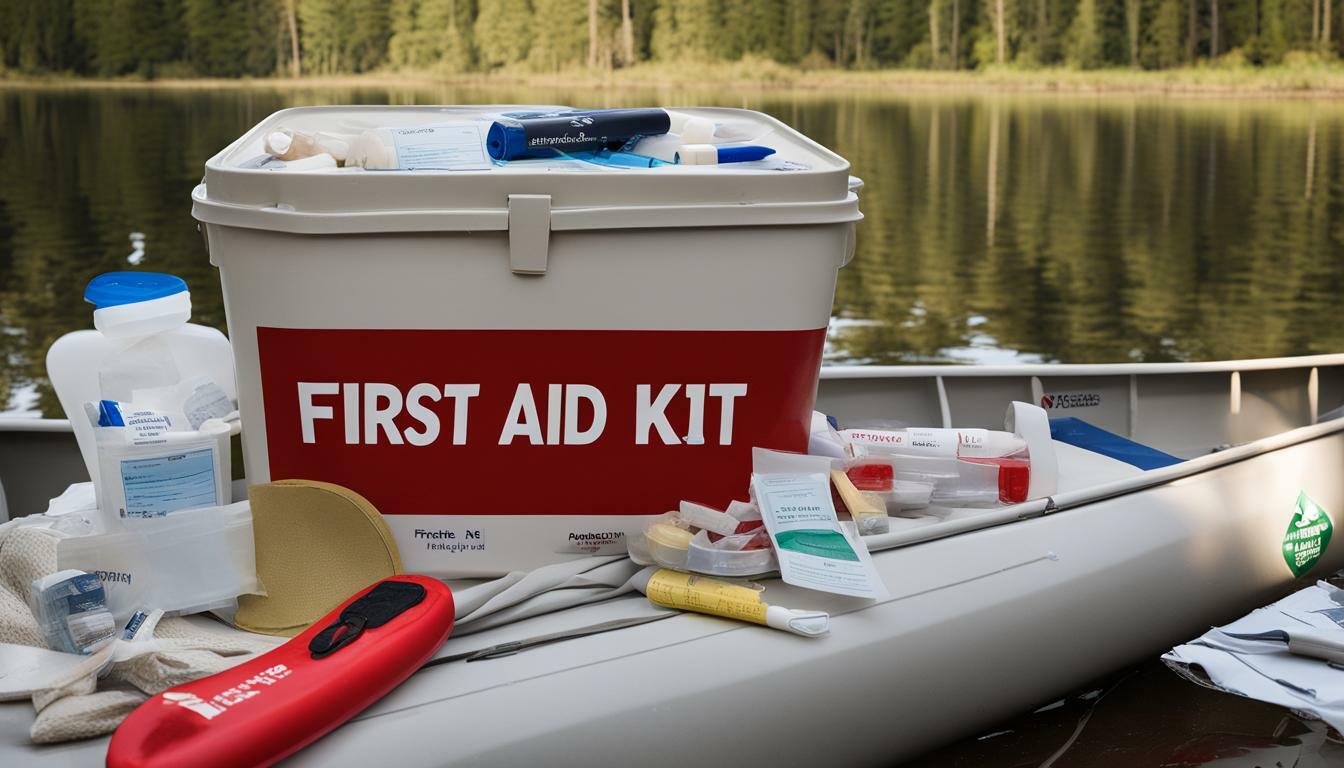
Wilderness First Aid Training and Certification
One of the most effective ways to be prepared for emergencies during canoe trips is to undergo wilderness first aid training and certification. This training equips canoeists with the necessary skills and knowledge to handle various injuries and emergencies that may occur while on the water.
Wilderness first aid for canoeing covers a broad range of topics, including common injuries such as cuts, bruises, and insect bites, as well as more severe emergencies such as fractures, hypothermia, and cardiac arrest. The training will also cover CPR and the use of an Automated External Defibrillator (AED) in case of cardiac emergencies.
Obtaining proper wilderness first aid certification will not only enhance your knowledge and skills in handling emergencies during canoe trips, but it will also make you a valuable asset to your group. You will be able to provide crucial assistance and potentially save a life in the event of an emergency.
It is also essential to bring along canoeing safety equipment, which includes personal flotation devices (PFDs), whistles, and throw bags. These items can aid in rescuing someone in the water and are crucial for safe canoeing.

Add Wilderness First Aid to Your Canoeing Safety Checklist
To ensure you are fully prepared for any emergency on a canoe trip, be sure to add wilderness first aid training and certification to your canoeing safety checklist. Not only will you gain valuable skills and knowledge, but you will also be able to assist your fellow canoeists in case of an emergency.
Wrap Up: Paddling Preparedness for Long-Distance Canoe Trips
Canoeing is a thrilling experience that requires adequate preparation to ensure a safe and enjoyable journey. In this article, we have highlighted the importance of paddling preparedness and having a well-stocked first aid kit for long-distance canoe trips.
It is essential to have the necessary emergency supplies for canoe trips, including a first aid kit equipped with all the essential gear. Understanding wilderness first aid is also critical for handling injuries and emergencies in remote areas.
Take Action for Safety
When selecting a first aid kit and other safety equipment, take into consideration the specific requirements for canoeing expeditions. In addition, it is vital to maintain the condition of your first aid kit by carrying out regular inspections and necessary replacements.
Obtaining proper wilderness first aid training and certification is also highly recommended for canoeists. This provides essential knowledge and skills in handling injuries and emergencies, ensuring safety while on the water.
Paddling Preparedness is Key
Finally, it is crucial to remember that paddling preparedness is key when navigating challenging conditions during long-distance canoe trips. By following expert tips and advice and staying equipped with the necessary safety equipment, canoeists can enjoy a safe and memorable journey.
Therefore, always be prepared, stay safe, and have a great time exploring the great outdoors on your next long-distance canoe trip.
